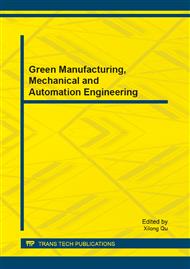[1]
Jiang, Qi yuan, Xie, Jinxing, Ye, Jun: the mathematical model (fourth edition). Beijing: Higher Education Press. 1(4), 121-125 (2011).
Google Scholar
[2]
Zhuo, Jin wu: mat lab in mathematical modeling. Beijing University of Aeronautics and Astronautics Press. 2(16), 69-78 (2011).
Google Scholar
[3]
Li, Can: Kaifeng: city soil properties. Metal pollution and change analysis. 3(6), 134-138 (2007).
Google Scholar
[4]
Gao Zheng Min: China's Environmental Protection Research Condition and Prospects. Journal of Soil. 4(7), 116-117 (1989).
Google Scholar
[5]
Guo, Xiao xiao, Liu, Cong qiang, Zhu, Zhao zhou, Wang, Zhongliang, Li, Jun: Soil heavy metal pollution evaluation method. Ecology magazine. 5(11), 96-97 (2011).
Google Scholar
[6]
Wang, Zhi gang: Young Poetry: Evaluation of the information network system based on fuzzy comprehensive evaluation can survive. Network Security Technology and Applications. 6(13), 57-60 (2010).
Google Scholar
[7]
Wang Yan, Wu Yi jin, Xiong Anyuan, Liu Yi: Hubei province summer travel climate comfort fuzzy comprehensive evaluation. Journal of Guizhou Meteorology. 7(2), 28-29 (2009).
Google Scholar
[8]
Di Qian bin, Han Zeng lin: Discussion of the Assessment Indicators System of Sustainable Development of Marine Economy. Areal Research and Development. 8(3), 117-121 (2009).
Google Scholar
[9]
Zhang Quan dong: Planning environmental impact assessment difficulties analysis Environment and Sustainable Development. 9(12), 39-42 (2011).
Google Scholar
[10]
Cui Feng: Coordinated Development Degree of Tourism Economy and Ecological Environment in Shanghai. China Population Resources and Environment. 10(12), 64-69 (2008).
Google Scholar


